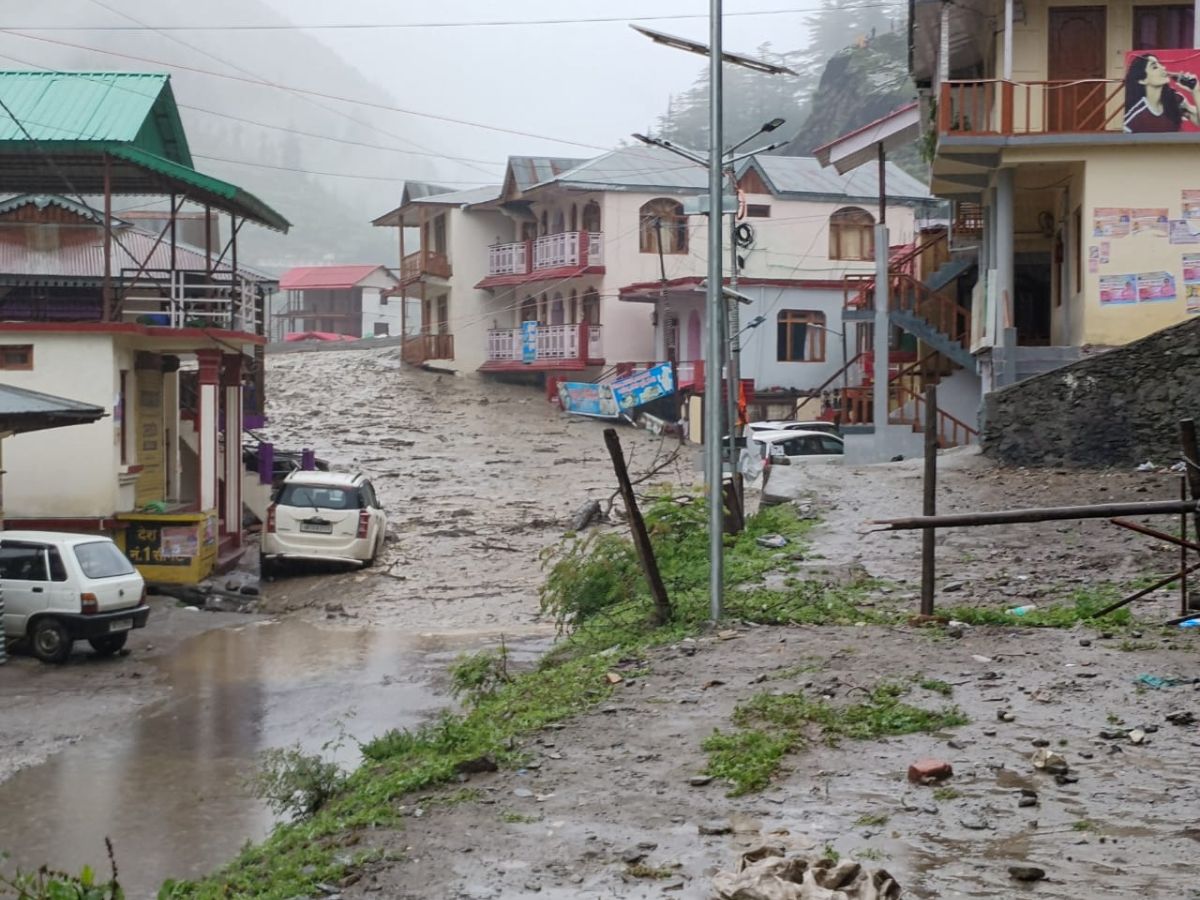A devastating cloudburst hit Tharali village in Uttarkashi district of Uttarakhand on Tuesday (August 05), unleashing a surge of water that destroyed homes and swept away entire communities. So far, at least four lives have been lost and more than 50 people remain missing. Rescue operations are ongoing, with emergency teams navigating debris and wreckage in a desperate search.
What Exactly Is a Cloudburst?
A cloudburst is a sudden, extreme weather event where over 100 mm of rain falls in under an hour, typically in a highly localised area. In mountainous regions like Uttarakhand, such intense rainfall can cause deadly flash floods and landslides with little or no warning.
Over the last decade, cloudbursts have become increasingly frequent in the state, each bringing widespread destruction.
Why Is Uttarakhand So Vulnerable?
The northern state of Uttarakhand lies in a geologically fragile and ecologically sensitive Himalayan zone. The steep slopes accelerate the upward movement of moisture-laden air, fostering ideal conditions for heavy rainfall. When monsoon winds hit the narrow valleys, the resulting downpours can be catastrophic.
Human activities have made things worse. Unchecked construction of roads, hotels, and dams has blocked natural water channels. This disrupts drainage, increases surface runoff, and raises flood risks. Deforestation has weakened slope stability, contributing to frequent landslides and erosion.
Climate Change Is Making It Worse
Global warming is altering monsoon behaviour. Temperature anomalies and changing wind patterns now direct more moisture into Uttarakhand, increasing the frequency and severity of cloudbursts. These climate shifts are becoming harder to predict, making disaster preparedness even more difficult.
As Tharali reels from destruction, the tragedy is a stark warning: the combination of climate change and unsustainable development in ecologically sensitive zones can have deadly consequences. Without urgent environmental reforms, such events may become tragically routine.
Also Read: New Book Chronicles Abrogation of Article 370 and Vision for Jammu and Kashmir’s Future
Karan Singh Rathod is a dedicated sports journalist known for his sharp attention to detail and flair for storytelling. With over a year of experience in writing and editorial work, he blends thorough research with compelling narratives to deliver engaging sports content. A passionate follower of football and cricket, he starts his mornings with a newspaper to stay updated with sports, fashion, and current affairs. Outside of journalism, Karan enjoys traveling and discovering new destinations.







